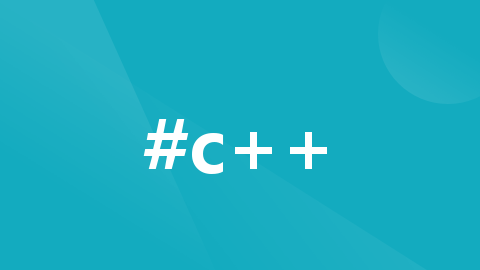SpringCloud 实战:禁止直接访问后端服务
作者 | 单一色调责编 | 张文来源 | 转载自 JAVA 日知录前言使用 SpringCloud 架构后,我们希望所有的请求都需要经过网关才能访问。在不作任何处理的情况下,我们是...

作者 | 单一色调 责编 | 张文
来源 | 转载自 JAVA 日知录

前言
使用 SpringCloud 架构后,我们希望所有的请求都需要经过网关才能访问。在不作任何处理的情况下,我们是可以绕过网关直接访问后端服务的。如下,我们绕过网关直接访问后端服务也是可以获取到数据的。

那我们今天的议题就是如何防止请求绕过网关直接访问后端服务?

解决方案
我觉得防止绕过网关直接请求后端服务的解决方案主要有三种:
-
使用 Kubernetes 部署
在使用 Kubernetes 部署 SpringCloud 架构时,我们给网关的 Service 配置 NodePort,其他后端服务的 Service 使用 ClusterIp,这样在集群外就只能访问到网关了。
-
网络隔离
后端普通服务都部署在内网,通过防火墙策略限制只允许网关应用访问后端服务。
-
应用层拦截
请求后端服务时通过拦截器校验请求是否来自网关,如果不来自网关则提示不允许访问。
这里我们着重关注在应用层拦截这种解决方案。

实现
实现思路
实现思路其实也很简单,在请求经过网关的时候给请求头中增加一个额外的 Header,在后端服务中写一个拦截器,判断请求头是否与在网关设置的请求 Header 一致,如果不一致则不允许访问并给出提示。
当然为了防止在每个后端服务都需要编写这个拦截器,我们可以将其写在一个公共的 starter 中,让后端服务引用即可。而且为了灵活,可以通过配置决定是否只允许后端服务访问。
接下来我们看看核心代码。
实现过程
在网关 cloud-gateway 模块编写网关过滤器
@Component@Order(0)public class GatewayRequestFilter implements GlobalFilter {
@Override public Mono<Void> filter(ServerWebExchange exchange, GatewayFilterChain chain) { byte[] token = Base64Utils.encode((CloudConstant.GATEWAY_TOKEN_VALUE).getBytes()); String[] headerValues = {new String(token)}; ServerHttpRequest build = exchange.getRequest() .mutate() .header(CloudConstant.GATEWAY_TOKEN_HEADER, headerValues) .build();
ServerWebExchange newExchange = exchange.mutate().request(build).build(); return chain.filter(newExchange); }
}
在请求经过网关时添加额外的 Header,为了方便这里直接设置成固定值。
建立公共 Starter 模块 cloud-component-security-starter

编写配置类,用于灵活控制服务是否允许绕过网关
@Data
@ConfigurationProperties(prefix = "javadaily.cloud")
public class CloudSecurityProperties {
/**
* 是否只能通过网关获取资源
* 默认为True
*/
private Boolean onlyFetchByGateway = Boolean.TRUE;
}
编写拦截器,用于校验请求是否经过网关
public class ServerProtectInterceptor implements HandlerInterceptor {
private CloudSecurityProperties properties;
@Override public boolean preHandle(@NonNull HttpServletRequest request, @NonNull HttpServletResponse response, @NonNull Object handler){
if (!properties.getOnlyFetchByGateway()) { return true; }
String token = request.getHeader(CloudConstant.GATEWAY_TOKEN_HEADER);
String gatewayToken = new String(Base64Utils.encode(CloudConstant.GATEWAY_TOKEN_VALUE.getBytes()));
if (StringUtils.equals(gatewayToken, token)) { return true; } else { ResultData<String> resultData = new ResultData<>(); resultData.setSuccess(false); resultData.setStatus(HttpServletResponse.SC_FORBIDDEN); resultData.setMessage("请通过网关访问资源"); WebUtils.writeJson(response,resultData); return false; } }
public void setProperties(CloudSecurityProperties properties) { this.properties = properties; }}
配置拦截器
public class CloudSecurityInterceptorConfigure implements WebMvcConfigurer {
private CloudSecurityProperties properties;
@Autowired public void setProperties(CloudSecurityProperties properties) { this.properties = properties; }
@Bean public HandlerInterceptor serverProtectInterceptor() { ServerProtectInterceptor interceptor = new ServerProtectInterceptor(); interceptor.setProperties(properties); return interceptor; }
@Override public void addInterceptors(InterceptorRegistry registry) { registry.addInterceptor(serverProtectInterceptor()); }}
编写 starter 装载类
@EnableConfigurationProperties(CloudSecurityProperties.class)public class CloudSecurityAutoConfigure{
@Bean public CloudSecurityInterceptorConfigure cloudSecurityInterceptorConfigure() { return new CloudSecurityInterceptorConfigure(); }
}
建立资源文件 spring.factories,配置 Bean 的自动加载
org.springframework.boot.autoconfigure.EnableAutoConfiguration=\ com.javadaily.component.security.configure.CloudSecurityAutoConfigure
在后端服务配置文件中添加属性配置,默认只能通过网关访问
javadaily: cloud: onlyFetchByGateway: true
经过以上几步,一个公共的 Starter 模块就构建完成了。
后端服务引用此公共 Starter 模块即可,以 account-service 为例
<dependency> <groupId>com.jianzh5.cloud</groupId> <artifactId>cloud-component-security-starter</artifactId></dependency>
实现效果
直接访问后端服务接口
http://localhost:8010/account/getByCode/jianzh5

返回结果:
{ "message": "请通过网关访问资源", "status": 403, "success": false, "timestamp": 1611660015830}
以上,希望对你有所帮助!

程序员如何避免陷入“内卷”、选择什么技术最有前景,中国开发者现状与技术趋势究竟是什么样?快来参与「2020 中国开发者大调查」,更有丰富奖品送不停!

☞小米澄清「手机不再支持GMS」;虾米音乐正式关停;《质量效应1》DLC 因源代码损坏而移除 | 极客头条☞一行代码没写,凭啥被尊为“第一位程序员”?
☞程序员硬核“年终大扫除”,清理了数据库 70GB 空间
更多推荐
 已为社区贡献12373条内容
已为社区贡献12373条内容








所有评论(0)